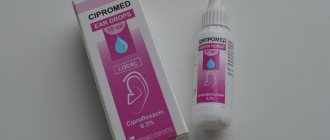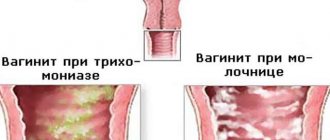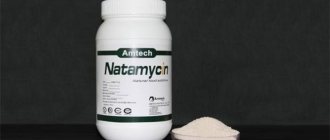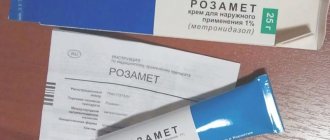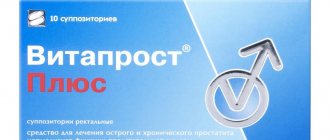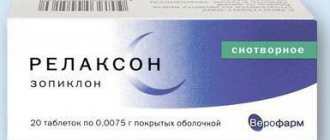The antimicrobial drug belongs to the class of β-lactam antibiotics. The natural source is mushrooms of the genus Penicillium. The main element is 6-aminopenicillanic acid. The varieties differ in their molecular structure. There are several classifications.
The largest group of drugs, occupying a leading place in the treatment of infectious diseases of various localizations. The defining properties include: a wide range of dosages, low toxicity, the possibility of parallel use with other medications, during pregnancy.
Compound
The composition of drugs that belong to penicillin group of antibiotics depends on what kind of medicine we are talking about.
Currently, four groups are used:
- natural penicillins;
- semisynthetic penicillins;
- aminopenicillins, which have an extended spectrum of action;
- penicillins, which have a wide antibacterial spectrum of influence.
Undesirable effects
A side effect is an allergy to the drug, which can develop during the first long course of treatment. But it occurs more often with repeated use. Hypersensitivity to antibiotics manifests itself in the form of rash, swelling, and fever. Anaphylactic shock can be fatal.
Possible negative side effects:
- vomiting reflex;
- frequent bowel movements;
- involuntary muscle contractions;
- headache with vomiting, hypersensitivity to light and auditory stimuli;
- loss of consciousness;
- fungal infection of the mucous membranes in the mouth, vagina.
Release form
Injectable preparations are available, as well as penicillin tablets.
The injection product is produced in glass bottles, which are closed with rubber stoppers and metal caps. The vials contain different doses of penicillin. It is dissolved before administration.
Penicillin-ecmoline tablets are also produced for resorption and oral administration. Sucking tablets contain 5000 units of penicillin. In tablets for oral administration - 50,000 units.
Penicillin tablets with sodium citrate may contain 50,000 and 100,000 units.
Advantages of the tablet form of the drug
Recently, the use of tablet form of penicillin preparations has become especially widespread, which is associated with its undoubted advantages. Firstly, the patient can save on the purchase of syringes and special solutions needed for injections. Secondly, the therapeutic course can be completed on an outpatient basis, without the help of medical personnel. In addition, the tablets include so-called antacid substances that help reduce the effect of gastric juice on the main active ingredient, providing maximum therapeutic effect.
Doctors recommend the following list of modern tablet drugs related to penicillins:
- Flemoxin.
- Amoxicillin.
- Ospamox.
- Amoxil KMP.
Penicillin preparations are an extremely effective and efficient remedy that helps cure numerous infectious diseases. Compliance with medical recommendations and basic rules of use allows you to achieve extremely fast and favorable results, while avoiding the occurrence of unwanted reactions and side effects.
pharmachologic effect
Penicillin is the first antimicrobial agent that was obtained using waste products of microorganisms as a basis. The history of this medicine begins in 1928, when the inventor of the antibiotic, Alexander Fleming, isolated it from a strain of the fungus Penicillium notatum. In the chapter that describes the history of the discovery of penicillin, Wikipedia testifies that the antibiotic was discovered by accident; after the bacteria entered the culture from the external environment of a mold fungus, its bactericidal effect was noted. Later, the formula of penicillin was determined, and other specialists began to study how to obtain penicillin. However, the answer to the questions of what year this drug was invented and who invented the antibiotic is clear.
The further description of penicillin on Wikipedia testifies to who created and improved the drugs. In the forties of the twentieth century, scientists in the USA and Great Britain worked on the industrial production process of penicillin. The first use of this antibacterial drug for the treatment of bacterial infections occurred in 1941. And in 1945, for the invention of penicillin, the Nobel Prize was received by its creator Fleming (the one who invented penicillin), as well as by the scientists who worked on its further improvement - Flory and Chain.
Speaking about who discovered penicillin in Russia, it should be noted that the first samples of the antibiotic were obtained in the Soviet Union in 1942 by microbiologists Balezina and Ermolyeva. Then industrial production of the antibiotic began in the country. In the late fifties, synthetic penicillins appeared.
When this drug was invented, for a long time it remained the main antibiotic used clinically throughout the world. And even after other antibiotics without penicillin were invented, this antibiotic remained an important drug for the treatment of infectious diseases. There is a claim that the medicine is obtained using cap mushrooms, but today there are different methods for its production. Currently, so-called protected penicillins are widely used.
The chemical composition of penicillin indicates that the drug is an acid, from which various salts are subsequently obtained. Penicillin antibiotics include Phenoxymethylpenicillin (penicillin V), Benzylpenicillin (penicillin G), etc. The classification of penicillins involves their division into natural and semi-synthetic.
Biosynthetic penicillins provide bactericidal and bacteriostatic effects, inhibiting the synthesis of the cell wall of microorganisms. They act on some gram-positive bacteria (Streptococcus spp., Staphylococcus spp., Bacillus anthracis, Corynebacterium diphtheria), on some gram-negative bacteria (Neisseria meningitidis, Neisseria gonorrhoeae), on anaerobic spore-forming bacilli (Spirochaetaceae Actinomyces spp.), etc.
The most active of the penicillin drugs is benzylpenicillin . Resistance to the influence of benzylpenicillin is demonstrated by strains of Staphylococcus spp. that produce penicillinase.
Penicillin is not effective against bacteria of the enteric-typhoid-dysenteric group, causative agents of tularemia, brucellosis, plague, cholera, as well as whooping cough, tuberculosis, Friedlander's, Pseudomonas aeruginosa and viruses, rickettsia, fungi, protozoa.
Penicillin antibiotics
Penicillin antibiotics are universal drugs that allow a person to get rid of bacterial pathologies in a timely and effective manner. These medicines are based on mushrooms, living organisms that save millions of people around the world every year.
History of discovery
The history of the discovery of penicillin antibacterial agents dates back to the 30s of the 20th century, when scientist Alexander Fleming, who was studying bacterial infections, accidentally identified an area in which bacteria did not grow. As additional research showed, such a place in the bowl was the mold that usually covers stale bread.
As it turned out, this substance easily killed staphylococci. After additional research, the scientist was able to isolate penicillin in its pure form, which became the first antibacterial agent.
The principle of action of this substance is as follows: during bacterial cell division, to restore its own damaged membrane, these substances use elements called peptidoglycans. Penicillin does not allow this substance to form, which is why bacteria lose the ability not only to reproduce, but also to develop further, and are destroyed.
However, not everything went smoothly; after some time, bacterial cells began to actively produce an enzyme called beta-lactamase, which began to destroy beta-lactams, which form the basis of penicillins. To solve this problem, additional components were added to the composition of antibacterial agents, for example, clavulonic acid.
Spectrum of action
After penetration into the human body, the drug easily spreads throughout all tissues and biological fluids. The only areas where it penetrates in very small quantities (up to 1%) are the cerebrospinal fluid, organs of the visual system and the prostate gland.
The drug is eliminated outside the body through the kidneys, after about 3 hours. The antibiotic effect of the natural variety of the drug is achieved by combating the following bacteria:
- gram-positive (staphylococci, pneumococci, streptococci, bacilli, listeria);
- gram-negative (gonococci, meningococci);
- anaerobic (clostridia, actiminocetes, fusobacteria);
- spirochetes (pallid, leptospira, borrelia);
- effective against Pseudomonas aeruginosa.
Penicillin antibiotics are used to treat various pathologies:
- infectious diseases of moderate severity;
- diseases of ENT organs (scarlet fever, tonsillitis, otitis media, pharyngitis);
- respiratory infections (bronchitis, pneumonia);
- diseases of the genitourinary system (cystitis, pyelonephritis);
- gonorrhea;
- syphilis;
- skin infections;
- osteomyelitis;
- blenorrhea occurring in newborns;
- leptospirosis;
- meningitis;
- actinomycosis;
- bacterial lesions of mucous and connective tissues.
Antibiotics classification
Penicillin antibiotics have different production methods , as well as properties, which allows them to be divided into 2 large groups.
- Natural ones that were discovered by Fleming.
- Semi-synthetic, were created a little later in 1957.
Experts have developed a classification of antibiotics from the penicillin group.
Natural ones include:
- phenoxylmethylpenicillin (Ospen, as well as its analogues);
- benzathine benzylpenicillin (Retarpen);
- benzylpenicillin sodium salt (Procaine penicillin).
The group of semi-synthetic products usually includes:
- aminopenicillins (amoxicillins, ampicillins);
- antistaphylococcal;
- antipeseudomonas (ureidopenicillins, carboxypenicillins);
- inhibitor-protected;
- combined.
Natural penicillins
Natural antibiotics have one weakness: they can be destroyed by beta-lactamase, as well as gastric juice.
Medicines classified in this group are in the form of solutions for injection:
- with extended action: this includes a penicillin substitute - bicillin, as well as novocaine salt of benzylpenicillins;
- with little effect: sodium and potassium salts of benzylpenicillins.
Long-acting penicillins are administered intramuscularly once a day, and novocaine salt is administered 2 to 3 times a day.
Biosynthetic
The penicillin series of antibiotics consists of acids, which, through the necessary manipulations, are combined with sodium and potassium salts. Such compounds are characterized by rapid absorption, which allows them to be used for injection.
As a rule, the therapeutic effect is noticeable within a quarter of an hour after administration of the drug, and it lasts for 4 hours (therefore, the drug requires repeated administration).
To prolong the effect of natural benzylpenicillin, it was combined with novocaine and some other components. The addition of novocaine salts to the main substance made it possible to lengthen the achieved therapeutic effect. Now it has become possible to reduce the number of injections to two or three per day.
Biosynthetic penicillins are used to treat the following diseases:
- chronic rheumatism;
- syphilis;
- streptococcus.
For the treatment of moderately severe infections, phenoxylmethylpenicillin is used. This variety is resistant to the destructive effects of hydrochloric acid, which is contained in gastric juice.
This substance is available in tablets, which can be taken orally (4-6 times a day). Biosynthetic penicillins work against most bacteria, with the exception of spirochetes.
Semi-synthetic antibiotics belonging to the penicillin series
This type of medication includes several subgroups of medications.
Aminopenicillins actively work against: enterobacteria, Haemophilus influenzae, Helicobacter pylori. These include the following drugs: ampicillin series (Ampicillin), amoxicillin (Flemoxin Solutab).
The activity of both subgroups of antibacterial agents extends to similar types of bacteria. However, ampicillins are not very effective against pneumococci, but some of their varieties (for example, Ampicillin trihydrate) easily cope with Shigella.
Drugs in this group are used as follows:
- Ampicillin by intravenous and intramuscular infections.
- Amoxicillin by oral administration.
Amoxicillins actively fight Pseudomonas aeruginosa, but, unfortunately, some of the representatives of this group can be destroyed under the influence of bacterial penicillinases.
The antistaphylococcal subgroup includes: Methicillin, Naficillin, Oxacillin, Fluxocillin, Dicloxacillin. These drugs are resistant to staphylococci.
The antipseudomonas subgroup, as the name implies, actively fights Pseudomonas aeruginosa, which provokes the appearance of severe forms of tonsillitis and cystitis.
This list includes two types of drugs:
- Carboxypenicillins: Carbecin, Timentin (for the treatment of severe lesions of the urinary tract and respiratory organs), Pyopen, disodium Carbinicillin (used only in adult patients by intramuscular, intravenous administration).
- Ureidopenicillins: Picillin piperacillin (used more often for pathologies caused by Klebsiella), Securopen, Azlin.
Combination antibiotics from the penicillin series
Combination drugs are also called inhibitor-protected, which means that they block bacterial beta-lactamases.
The list of beta-lactamase inhibitors is very large, the most common are:
- clavulonic acid;
- sulbactam;
- tazobactam.
For the purpose of treating pathologies of the respiratory and genitourinary systems, the following antibacterial compounds are used:
- amoxicillin and clavulonic acid (Augmentin, Amoxil, Amoxiclav);
- ampicillin and sulbactam (Unasin);
- ticarcillin and clavulonic acid (Timentin);
- piperacillin and tazobactam (Tazocin);
- ampicillin and oxacillin (Ampiox sodium).
Penicillins for adults
Semi-synthetic drugs are actively used to combat sinusitis, otitis, pneumonia, pharyngitis, and tonsillitis. For adults, there is a list of the most effective drugs:
- Augmentin;
- Amoxicar;
- Ospamox;
- Amoxicillin;
- Amoxiclav;
- Ticarcillin;
- Flemoxin Solutab.
To get rid of pyelonephritis (purulent, chronic), cystitis (bacterial), urethritis, salpingitis, endometritis, use:
- Augmentin;
- Honeyclave;
- amoxiclav;
- Ticarcillin with clavulonic acid.
When a patient suffers from an allergy to penicillin drugs, he may have an allergic reaction in response to taking such drugs (this can be simple hives, or a severe reaction leading to anaphylactic shock). If such reactions occur, the patient is advised to use drugs from the macrolide group.
The category of pregnant women deserves special attention; to relieve them of chronic pyelonephritis, the following is used:
- Ampicillin;
- Oxacillin (if the pathogen is staphylococcus);
- Augmentin.
If you are intolerant to the penicillin group, the doctor may recommend the use of a group of reserve antibiotics in relation to penicillins: cephalosporins (Cefazolin) or macrolides (Clarithromycin).
Penicillins for the treatment of children
Many antibacterial agents have been created based on penicillins, some of them are approved for use in pediatric patients. These drugs are characterized by low toxicity and high efficiency, which allows their use in young patients.
For children, inhibitor-protected drugs are used orally.
The following antibiotics are prescribed to children:
- Flemoklav Solutab;
- Augmentin;
- Amoxiclav;
- Amoxicillin;
- Flemoxin.
Non-penicillin forms include Vilprafen Solutab, Unidox Solutab.
The word “solutab” means that the tablets dissolve under the influence of liquid. This fact makes it easier for young patients to take medications.
Many antibiotics of the penicillin group are produced in the form of suspensions that look like a sweet syrup. To determine the dosage for each patient, it is necessary to take into account his age and body weight.
Only a specialist can prescribe antibacterial agents for children. Self-medication with the use of such drugs is not allowed.
Contraindications side effects of penicillins
The use of penicillin drugs, despite all their effectiveness and benefits, is not possible for all categories of patients; the instructions for the drugs contain a list of conditions when the use of such drugs is prohibited.
Contraindications:
- hypersensitivity, personal intolerance or strong reactions to the components of the drug;
- previous reactions to cephalosporins, penicillins;
- dysfunction of the liver and kidneys.
Each drug has its own list of contraindications, indicated in the instructions; you should familiarize yourself with it before starting drug therapy.
As a rule, penicillin antibiotics are well tolerated by patients. But, in rare cases, more negative manifestations may occur.
Side effects:
- allergic reactions are manifested by skin rash, urticaria, tissue swelling, itching, other rashes, Quincke's edema, anaphylactic shock;
- from the gastrointestinal tract, nausea, epigastric pain, and digestive disorders may appear;
- circulatory system: increased blood pressure, heart rhythm disturbances;
- liver and kidneys: development of insufficiency in the functioning of these organs.
To prevent the development of adverse reactions, it is very important to take antibiotics only as prescribed by the doctor, be sure to use auxiliary agents (for example, probiotics) that he recommends.
Source: https://bezgrippa.com/preparaty/antibiotiki-penicillinovogo-ryada/
Pharmacokinetics and pharmacodynamics
The most effective method is intramuscular administration. After such use, the active component very quickly enters blood . The highest concentration of the product is observed 30-60 minutes after application. After a single administration, only trace concentrations are determined.
It is quickly detected in muscles, wound exudate, in joint cavities, and in muscles.
A small amount of it is observed in the cerebrospinal fluid. A small amount will also enter the pleural cavities and abdominal cavity, so direct local action of the drug is required if necessary.
Penetrates to the fetus through the placenta. It is excreted from the body through the kidneys, so about 50% of the drug is eliminated. Also, part of it is excreted in bile.
If a patient takes penicillin in tablets, he needs to take into account that when taken orally, the antibiotic is poorly absorbed, and part of it is destroyed under the influence of gastric juice and beta-lactamase, which is produced by intestinal microflora .
Penicillins: mechanism of action, indications, contraindications
Dr. Sakovich · 2015/09/21 · Updated 2017/11/29
Penicillins have a narrow spectrum of action and are characterized by a bactericidal effect.
Penicillins are distinguished:
- Biosynthetic penicillins: short-acting (benzylpenicillin sodium, potassium salt) and long-acting (benzylpenicillin novocaine salt, bicillins);
- Semi-synthetic penicillins: oxacillin, ampicillin, amoxicillin, carbenicillin. Semi-synthetic penicillins, unlike natural ones, are not destroyed in the acidic contents of the stomach and can be used orally; some are beta-lactamase resistant; wider spectrum of action.
Mechanism of action of penicillins
The mechanism of action of penicillins: activate the lytic enzymes of microorganisms, which more actively lyse the CS; inhibit the activity of transpeptidases and glycosidases, disrupting the binding (cross-linking) between old and new peptidoglycans.
Benzylpenicillin sodium, potassium salts
Benzylpenicillin sodium and potassium salts are highly soluble in water, but they quickly break down in solutions, so they are diluted before administration.
Administer intramuscularly, intravenously, endolumbarally, intracavitarily 4-6 times a day.
Easily penetrate into the pleural, pericardial cavities, kidneys, liver, lungs, poorly - through the blood-brain barrier, but with inflammation, penetration increases, bone tissue, can affect the fetus through the placenta.
Indications for use
Indications:
- upper respiratory tract diseases,
- angina,
- scarlet fever,
- otitis,
- septic endocarditis,
- sepsis,
- syphilis,
- gonorrhea,
- meningitis,
- tetanus,
- anthrax,
- urinary tract diseases,
- osteomyelitis,
- wound infections,
- used in obstetrics and dental practice.
Side effects
Side effects:
- allergic reactions,
- neurotoxicity: seizures, hallucinations at high doses,
- dysbacteriosis,
- local irritant effect: oral administration - dyspepsia, nausea, vomiting, intravenous - phlebitis, candidiasis, superinfection.
Benzylpenicillin novocaine salt
Benzylpenicillin novocaine salt is similar, but long-acting, 2 times a day.
Bicillin-1,3,5
Bicillin-1,3,5 – poorly soluble salts of benzylpenicillin, poorly soluble in water, used in the form of suspensions, slowly absorbed, administered intramuscularly once a week/4 days/month. Bicillin-3 includes novocaine salt, benzylpenicillin, bicillin-1, bicillin-5 1 novocaine salt, 4 parts bicillin-1.
Oxacillin
Oxacillin is an antistaphylococcal, beta-lactamase resistant, administered intramuscularly, intravenously, orally 4-6 times a day an hour before meals or 2 hours after meals. Easily penetrate into the pleural, pericardial cavities, kidneys, liver, lungs, poorly - through the blood-brain barrier, but with inflammation, penetration increases, bone tissue, can affect the fetus through the placenta.
Ampicillin
Ampicillin - broad-spectrum, not resistant to beta-lactamase, administered intramuscularly, intravenously, orally 4-6 times a day, easily penetrates tissues through the blood-brain barrier.
Carbenicillin, amoxicillin
Carbenicillin, amoxicillin - broad-spectrum, not resistant to beta-lactamase, administered intramuscularly, intravenously, 4 times a day, does not penetrate the BBB.
Indications for use
Antibiotics of the penicillin group, the names of which will be prompted directly by the attending physician, are used to treat diseases caused by microorganisms sensitive to penicillin:
- pneumonia (lobar and focal);
- pleural empyema;
- septic endocarditis in acute and subacute forms;
- sepsis;
- pyemia;
- septicemia;
- osteomyelitis in acute and chronic form;
- meningitis;
- infectious diseases of the biliary and urinary tract;
- purulent infectious diseases of the skin, mucous membranes, soft tissues;
- angina;
- scarlet fever;
- erysipelas;
- anthrax;
- actinomycosis;
- diphtheria;
- gynecological purulent-inflammatory diseases;
- ENT diseases;
- eye diseases;
- gonorrhea, syphilis , blenorrhea.
Penicillin today
In modern medicine, antibiotics are practically no longer used. Although the list of what diseases penicillin treats is quite impressive. The problem lies in the inactivity of the drug against gram-negative bacteria. And its effectiveness against streptococci, staphylococci, gonorrhea, anthrax and diphtheria is at a “satisfactory” level. And it is inconvenient to use - the dosage and frequency of administration are too large.
Modern scientists based on penicillin have created a number of good synthetic antibiotics that are stronger, more convenient to use and more effective in treating the diseases described above. For example, “Amoxiclav”, “Amoxicillin”, “Ampicillin” and others. And the use of natural penicillin is slowly becoming a thing of the past. It is no longer used in almost any medical institution in the country, with the exception of hospital centers in remote corners. However, it was he who initiated the development of antibiotics - drugs that have significantly reduced mortality from inflammatory, infectious and many other diseases.
Contraindications
Tablets and injections are not used in the following cases:
- with high sensitivity to this antibiotic;
- for urticaria , hay fever , bronchial asthma and other allergic manifestations ;
- when patients exhibit high sensitivity to sulfonamides, antibiotics, as well as other drugs.
Allergy to penicillin
This is no less important a topic than what an antibiotic treats. Penicillin can cause allergies due to the body's immunity to these foreign substances. For example, the most common occupational sensitization is among nurses and people working in the production of antibiotics. But the development of an allergic reaction at the first meeting with penicillin is observed much less frequently.
The condition manifests itself with various allergy symptoms mainly in those who suffer from urticaria and bronchial asthma. It is expressed by various rashes on the skin, some of which are life-threatening. It happens that contact dermatitis occurs due to lotions, ointments and other substances based on penicillin. It is possible to develop asthmatic bronchitis, inflammatory diseases of the nasopharynx and ears, stomatitis, as well as diarrhea, nausea and vomiting. If such symptoms occur, treatment with antihistamines is prescribed.
Side effects
During use, the patient must understand what penicillin is and what side effects it can cause. During treatment, allergy symptoms sometimes appear. As a rule, such manifestations are associated with sensitization of the body due to earlier use of these drugs. Allergies can also When using the medicine for the first time, allergies are observed less frequently. There is a possibility of sensitization of the fetus during pregnancy if a woman takes penicillin.
The following side effects may also develop during the course of treatment:
- Digestive system: nausea, diarrhea , vomiting.
- Central nervous system: neurotoxic reactions, signs of meningism, coma , convulsions .
- Allergies: urticaria , fever, rash on mucous membranes and skin, eosinophilia, edema . Cases of anaphylactic shock and death have been recorded. Adrenaline should be immediately administered intravenously.
- Manifestations associated with chemotherapeutic effects: oral candidiasis
Use during pregnancy and lactation
Penetrates through the placenta. In laboratory conditions, no mutagenic, teratogenic or embryotoxic properties were found. No studies have been conducted on women. Prescribed during pregnancy under the close supervision of the attending physician.
It is not advisable to use the medicine during breastfeeding. The active substance passes into breast milk. The child develops candidiasis, intestinal microflora is disrupted, diarrhea and skin rash appear. At the time of therapy, it is recommended to stop feeding.
Instructions for use of penicillin (Method and dosage)
Antimicrobial action is observed with local and resorptive action of penicillin.
Instructions for the use of penicillin in injections
The drug can be administered subcutaneously, intramuscularly, or intravenously. The drug is also injected into the spinal canal. For therapy to be as effective as possible, the dose must be calculated so that there is 0.1–0.3 units of penicillin in 1 ml of blood. Therefore, the drug is administered every 3-4 hours.
For the treatment of pneumonia , syphilis , cerebrospinal meningitis, etc., a doctor prescribes a special regimen.
Instructions for use of penicillin tablets
The dosage of penicillin tablets depends on the disease and on the treatment regimen prescribed by the attending physician. As a rule, patients are prescribed 250-500 mg, the drug should be taken every 8 hours. If necessary, the dose is increased to 750 mg. It is recommended to take tablets half an hour before meals or two hours after meals. The duration of treatment depends on the disease.
The role of antibiotics in the treatment of syphilis
Studying the list of things that penicillin helps with, you can see in it a disease such as syphilis. Today, antibiotics are excellent in treating this disease. The dosage, duration of treatment and other factors that determine the therapeutic regimen are selected by the doctor for each patient individually, which depends on several parameters. First of all, it depends on the severity of the pathology. It should be noted that no other group of antibiotics helps cure syphilis as efficiently and quickly as penicillin does.
Syphilis is a chronic systemic venereal disease caused by Treponema pallidum. The pathology is manifested by damage to the skin, mucous membranes, bones and internal organs. The disease is not always transmitted sexually due to promiscuity. Its development can also be facilitated by the transfusion of infected blood, the use of contaminated instruments and household activities.
Penicillin treats syphilis due to its ability to suppress the development and growth of Treponema pallidum. In the primary and secondary stages, up to 600,000 units are usually prescribed once a day for one and a half weeks. In the latent phase, it is recommended to take the medicine according to a similar regimen, only for 15 days. For congenital syphilis, it is treated with a one-time injection of 50,000 units per 1 kg of baby’s body weight to a newborn. However, the course can be extended to 10 days if there are violations.
Now we know what the antibiotic penicillin is for, what contraindications and warnings there are, as well as how it appeared in the world and how it marked the beginning of the rapid development of the pharmacological industry. But it’s better to live in such a way that you never need any medicine, especially antibiotics!
Overdose
It should be borne in mind that when taking large doses of penicillin, an overdose can occur, which can cause unpleasant symptoms in the form of nausea, vomiting, and diarrhea . But this condition is not life-threatening.
hyperkalemia may develop in patients suffering from renal failure .
When large doses of the drug are administered intraventricularly or intravenously, epileptic seizures may occur. But such a symptom appears in adult patients only after administration of at least 50 million units. medications. In this case, the patient is prescribed barbiturates or benzodiazepines.
Drug substitutes
The first generation of penicillins are penicillins obtained from the acid produced by molds. To impart stability, it is converted into salts: sodium, potassium, novocaine.
Depending on the type of salt, natural penicillins, in turn, are divided into subgroups, for example, penicillin G (Benzylpenicillin), penicillin V (Phenoxymethylpenicillin).
The second generation is analogues of natural penicillins, obtained artificially, for example, Oxacillin.
Third, aminopenicillins, semisynthetic drugs that have an advantage over biosynthetic forms in affecting a larger number of pathogens. The third generation includes Amoxicillin and Ampicillin.
The fourth generation of bactericidal drugs has protection against the effects of beta-lactose bacteria. They are effective against most types of bacteria.
V-Penicillin
Phenoxymethylpenicillin is available in the form of tablets and powder for suspension. The drug is not prescribed for severe forms of the inflammatory process; it has a therapeutic effect on gram-positive bacteria and a narrow range of gram-negative ones.
The drug is effective against bacterial infections of the oral cavity, lungs, bronchi, and skin. It is recommended to take it for infections with anthrax, tetanus, syphilis and gonorrhea, for preventive purposes in the postoperative period.
Contraindications for use: vomiting, diarrhea, allergies to penicillins, severe inflammatory processes.
Amoxisar
A drug whose active ingredient is amoxicillin. Available in the form of a colorless powder for the preparation of effective injection solutions for intravenous and intramuscular administration. A broad-spectrum antibiotic, but does not affect Proteus, intracellular parasites, viruses and bacteria that produce penicillinase.
The solution is used in the form of injections and infusions, without age restrictions, including premature babies.
Contraindications for use:
- allergy to penicillins;
- liver, kidney failure;
- inflammation of the large intestine.
Treatment is as prescribed by a doctor, with the duration of therapy extended by 2-3 days after the disappearance of the main symptoms.
Interaction
When taken simultaneously with Probenecid, of benzylpenicillin decreases , which leads to an increase in its concentration in plasma and an increase in the half-life.
If combined use with tetracycline , the bactericidal effect of benzylpenicillin is reduced.
Dilution in the same syringe or in the same system for infusion of penicillin and aminoglycosides , since these agents are physicochemically incompatible.
If large doses of benzylpenicillin potassium salt in combination with potassium supplements, potassium-sparing diuretics or ACE inhibitors, there is an increased risk of hyperkalemia.
When taking penicillins that demonstrate activity against Pseudomonas aeruginosa with antiplatelet agents and anticoagulants, caution should be exercised, as there is a risk of increased bleeding.
It is not recommended to take simultaneously with thrombolytics .
Sulfonamides weaken the bactericidal effect of the antibiotic.
When taking Cholestyramine and penicillins simultaneously, the bioavailability of the latter decreases.
When taking oral penicillins simultaneously with oral contraceptives, the effectiveness of the latter may be reduced due to disruption of the enterohepatic circulation of estrogen .
When taking an antibiotic, the process of removing methotrexate from the body may slow down due to inhibition of its tubular secretion.
Concomitant use with other drugs
Bacteriostatic antibacterial agents (erythromycins, sulfonamides and tetracyclines) may counteract the bactericidal effect of the drug, so it is recommended to avoid the combined use of these medications.
Blood levels of penicillin can be increased by concomitant administration of probenecid, which blocks the secretion of penicillin from the renal tubules.
Other drugs may compete with penicillin G for renal tubular secretion and thus prolong the serum half-life of penicillin. These medications include: aspirin, phenylbutazone, sulfonamides, indomethacin, thiazide diuretics, furosemide, and ethacrynic acid.
special instructions
Before using penicillin, it is important to conduct tests and determine sensitivity to the antibiotic.
Prescribe the medicine with caution to people who have impaired renal function, as well as patients with acute heart failure , people who have a tendency to allergic manifestations or severe sensitivity to cephalosporins .
If 3-5 days after the start of treatment there is no improvement in the patient’s condition, it is important to consult a doctor who will prescribe other antibiotics or combination treatment.
Since in the process of taking antibiotics there is a high probability of fungal superinfection , it is important to take antifungal agents during treatment. It is also important to consider that when using subtherapeutic doses of the drug or with an incomplete course of therapy, the emergence of resistant strains of pathogens is possible.
When taking the drug orally, you should take it with plenty of liquid. It is important to strictly follow the instructions on how to dilute the product.
During treatment with penicillins, it is necessary to strictly follow the prescribed treatment regimen and not skip doses. If a dose is missed, the dose should be taken as soon as possible. You cannot interrupt the course of treatment.
Since expired medicine may be toxic, it should not be taken.
Diseases for which antibiotics are prescribed
The medicine has a therapeutic effect during therapy:
- lungs and bronchi;
- nasopharynx, oropharynx;
- genitourinary system;
- inflammation of the heart muscle;
- gallbladder;
- purulent lesions of the skin and soft tissues;
- venereal diseases;
- erysipelas;
- diphtheria and scarlet fever;
- purulent-necrotic inflammation of bones, bone marrow.
Analogs
Level 4 ATC code matches:
Hiconcil
Ampioks
Ampicillin Trihydrate
Ampicillin
Ospamox
Amoxicar
Flemoxin Solutab
Amoxicillin
Amosin
Amoxil
Ecoball
There are a number of penicillin drugs; the most optimal antibiotic is determined by the doctor individually.
Penicillin price, where to buy
The price of Penicillin tablets depends on the drug and ranges from 30 rubles. per package. You can buy Penicillin in ampoules at a price of 60 rubles per 1 ampoule.
- Online pharmacies in RussiaRussia
- Online pharmacies in UkraineUkraine
- Online pharmacies in KazakhstanKazakhstan
LuxPharma* special offer
- Penicillin G (Infectocillin, Extensillin) 5 million IU No. 1
1980 rub. order - Ospen (Phenoxymethylpenicillin) tab. 1 million ME No. 12
RUB 1,480 order
- Ospen (Phenoxymethylpenicillin) syrup 750000 IU/5 ml 60 ml
1380 rub. order
- Penicillin G sodium salt Austria 1 million. ME N1
1190 rub. order
show more
Pharmacy24
- Penicillin G sodium salt No. 100 powder for the preparation of solution for injection Sandoz GmbH, Austria
2522 UAH.order - Benzylpenicillin-KMP 500,000 IU powder PAT "Kievmedpreparat", Ukraine
6 UAH order
- Benzylpenicillin-KMP 1,000,000 IU powder for the preparation of solution for injection PAT"Kievmedpreparat", Ukraine
8 UAH order
PaniPharmacy
- Penicillin bottle Penicillin G sodium salt powder for the preparation of solution for injection 1000000IU bottles No. 100 Austria, Sandoz
2985 UAH. order
- Benzylpenicillin bottle Benzylpenicillin sodium salt powder for injection 1000000IU Ukraine, Kievmedpreparat OJSC
11 UAH order
show more
Antibiotic penicillin: what treats?
- August 22, 2021
- Infectious
- Alexa Loktionova
The year 1928 is considered the most important year for modern medicine. It was then that penicillin was discovered - the world's first antibiotic, the “father” of which is Alexander Fleming. This event can be considered a real breakthrough.
Before the invention of penicillin, which marked the start of the development of new drugs, any infectious disease, which today humanity treats without a drop of fear, led to serious pathologies of vital organs. A disease such as pneumonia meant inevitable death, any complications during childbirth could lead to the death of mother and child, and from syphilis a person literally “burned” before our eyes in agony.
Today, many activists may continue to be strongly opposed to antibiotics. But if something serious happens, they will understand how important the role of these drugs is in the successful treatment of many serious pathologies. What penicillin treats will be discussed in the article.
Discovery of penicillin
Back during the First World War, simultaneously with the treatment of soldiers, Fleming began to search for a medicine that could kill bacteria, since during surgical interventions the wounds got infected, which often became the cause of death.
Fleming had cups with bacteria placed around, which helped him conduct experiments regarding the effectiveness of certain remedies. And one day a piece of moldy bread fell into such a container. Since Fleming did not notice this immediately, he had no intention of removing it from the nutrient medium.
However, when I paid attention, I was pleasantly surprised - all the bacteria at the point of contact disappeared. Naturally, this behavior of bacteria interested the scientist. He conducted numerous experiments that helped obtain the desired substance in its pure form.
And although it turned out to be “weak,” Fleming still managed to prove the effectiveness of this material in the fight against bacteria.
Modern people would not have known that penicillin cures if it were not for Flory and Chain, two British scientists who obtained it in its pure form and created a medicine based on the substance. It was first introduced to humans at the beginning of World War II.
The guy suffered from sepsis, and the penicillin drug helped him - his condition improved. However, after a while he still died due to the small dosage of the administered drug.
After this, adjustments to the amount of the administered substance began to be made, and based on the knowledge gained, various groups of synthetic antibiotics were created.
Penicillin group drugs
Probably, even a person who has nothing to do with medicine knows that this antibiotic occupies a separate chapter in the section on pharmacology.
Penicillin drugs were placed in a separate classification group because of their effect on bacterial cells, namely, because of their ability to suppress chemical reactions important for the reproduction and vital activity of microorganisms. And before you find out what penicillin treats, you should get acquainted with these groups:
- smallpox;
- procaine;
- benzylpenicillin potassium salt;
- benzylpenicillin sodium salt;
- retarpen;
- bicillin.
They can also be divided into natural and synthetic. The first ones are more gentle, but less effective. The latter hit the body much harder, but they allow you to heal in a short time. Today, the pharmaceutical industry has developed the fourth generation of penicillin antibiotics.
pharmachologic effect
How this substance “works” is not difficult to understand. Penicillin contains 6-aminopenicillanic acid. When it gets into bacteria, it destroys their cell wall (however, this does not affect all types of microorganisms). Destruction of the cell wall leads to the death of bacteria.
Initially, there were many types of them. For example, it used to be possible to say that penicillin treats diseases such as cholera, typhoid, syphilis, diphtheria and many others, and also has a negative effect on streptococci, staphylococci and E. coli.
And then most of them learned to develop immunity to this substance, which created the need to increase the dosage.
In other words, if you treat some diseases with penicillin, you will have to administer large, painful doses at least 6 times a day.
Side effects and overdose
There have been no cases of overdose with this drug in the history of medicine. However, side effects may occur. All of them are somehow associated with the development of an allergic reaction.
Surely, some readers have friends or relatives who are intolerant to this antibiotic and other representatives of this group. These are situations where the drug should never be administered.
The most dangerous reaction is Quincke's edema, which can be fatal.
Allergy to penicillin
This is no less important a topic than what an antibiotic treats. Penicillin can cause allergies due to the body's immunity to these foreign substances. For example, the most common occupational sensitization is among nurses and people working in the production of antibiotics. But the development of an allergic reaction at the first meeting with penicillin is observed much less frequently.
The condition manifests itself with various allergy symptoms mainly in those who suffer from urticaria and bronchial asthma. It is expressed by various rashes on the skin, some of which are life-threatening.
It happens that contact dermatitis occurs due to lotions, ointments and other substances based on penicillin. It is possible to develop asthmatic bronchitis, inflammatory diseases of the nasopharynx and ears, stomatitis, as well as diarrhea, nausea and vomiting.
If such symptoms occur, treatment with antihistamines is prescribed.
Forms of release of the drug
The drug is available in the form of a powder for the preparation of a solution for intramuscular or intravenous administration, as well as in the form of tablets of 250 mg and 500 mg, or 5000 units for resorption.
What does penicillin treat? Indications for use
One of the following conditions may be the basis for prescribing this drug:
- sepsis, in particular streptococcal;
- the occurrence of sulfonamide-resistant infections, for example, pneumococcal, gonococcal, meningococcal;
- development of deeply localized and extensive infectious processes such as gas gangrene and osteomyelitis;
- consequences of various wounds with infection entering the musculoskeletal tissue;
- postoperative periods (used to prevent purulent complications);
- injuries of soft tissues and chest;
- purulent meningitis and brain abscess;
- erysipelas;
- gonorrhea;
- syphilis;
- severe furunculosis;
- sycosis;
- inflammatory eye and ear diseases.
The instructions for “Penicillin” reveal in detail the situations when this drug will have a positive effect. Together with sulfonamide drugs, it is prescribed in the clinic of internal diseases, for example, for lobar pneumonia. It helps to cope well with focal pneumonia, acute sepsis, cholangitis, cholecystitis, and prolonged septic endocarditis.
Penicillin is used in pediatrics to eliminate umbilical sepsis and various other septic-toxic pathologies of the newborn. It can also be prescribed in the treatment of pneumonia, otitis and scarlet fever.
Instructions for “Penicillin”: application features and dosage
Tablets are taken half an hour before meals or 2 hours after with an interval of 8 hours. There is also a drug for resorption with a dosage of 500 units. They are taken every 4 hours up to 6 times a day.
Prescribed for furunculosis, sore throat, scarlet fever, pneumonia. The powder for preparing the solution is prepared immediately before administration. It is diluted with 1.5 ml of water for injection per 250 mg of powder. Administer up to 4 times a day.
Used in the treatment of meningitis, pneumonia and syphilis.
Contraindications
Once you know what penicillin treats, you should not self-medicate. There are cases when the drug can only worsen the condition. It is important to familiarize yourself with the contraindications:
- bronchial asthma;
- hypersensitivity to penicillin;
- hives;
- various allergic diseases;
- hypersensitivity to antibiotics, sulfonamides and other drugs.
Sensitization to penicillin is possible even during the period of intrauterine development of the fetus. It is prescribed to pregnant women only when absolutely necessary and under constant medical supervision.
Studies of women regarding the reaction of the fetus to taking penicillins during fetal development have not been conducted, but it is known that no mutagenic or other changes were identified. Penicillin therapy is prohibited during breastfeeding, as the antibiotic passes into breast milk.
Penicillin today
In modern medicine, antibiotics are practically no longer used. Although the list of what diseases penicillin treats is quite impressive.
The problem lies in the inactivity of the drug against gram-negative bacteria. And its effectiveness against streptococci, staphylococci, gonorrhea, anthrax and diphtheria is at a “satisfactory” level.
And it is inconvenient to use - the dosage and frequency of administration are too large.
Modern scientists based on penicillin have created a number of good synthetic antibiotics that are stronger, more convenient to use and more effective in treating the diseases described above. For example, “Amoxiclav”, “Amoxicillin”, “Ampicillin” and others. And the use of natural penicillin is slowly becoming a thing of the past.
It is no longer used in almost any medical institution in the country, with the exception of hospital centers in remote corners.
However, it was he who initiated the development of antibiotics - drugs that have significantly reduced mortality from inflammatory, infectious and many other diseases.
